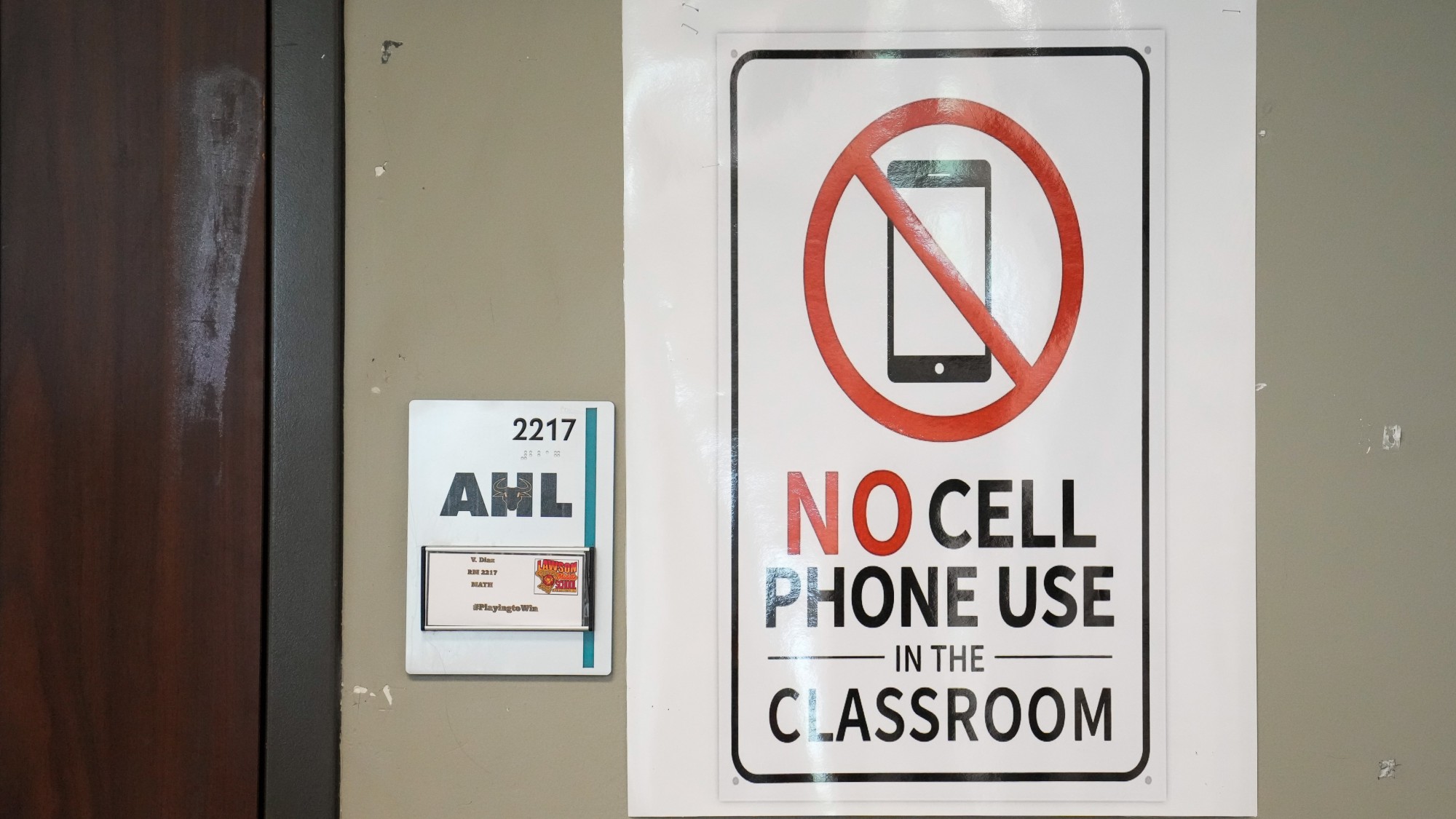How will new V level qualifications work?
Government proposals aim to ‘streamline’ post-GCSE education options

V levels will become the “only pathway” for young people aged 16-19 to gain vocational qualifications equivalent to an A level, the government announced yesterday.
The new level 3 qualifications “simplify” students’ decisions, and “streamline” the 900 existing vocational qualifications, allowing them to mix and match education options more easily.
They will sit alongside A levels, which have an “academic” focus, and T levels, suitable for those who are “confident about working in a certain occupational area”. V levels will offer those less sure of their career pathway more flexibility, the government’s “Post-16 education and skills” white paper said.
The Week
Escape your echo chamber. Get the facts behind the news, plus analysis from multiple perspectives.

Sign up for The Week's Free Newsletters
From our morning news briefing to a weekly Good News Newsletter, get the best of The Week delivered directly to your inbox.
From our morning news briefing to a weekly Good News Newsletter, get the best of The Week delivered directly to your inbox.
How would they work?
V levels will replace BTecs, which have been around since the mid-1980s. While A levels are geared towards university entrance, and a T level (a two-year course equivalent to three A levels) offers training for a specific career, V levels are designed for young people to keep their options open, said FE Week. They are tied to “rigorous and real-world job standards” and mix theoretical learning with developing practical skills.
As an example, after finishing their GCSEs, a student could study a V level in finance and accounting in conjunction with A levels in environmental science and geography. This student might then go on to an apprenticeship in the renewables sector.
Why are they needed?
V levels represent one of the first steps towards Keir Starmer’s target for two-thirds of young people to go to university, or pursue a “gold-standard apprenticeship” or equivalent qualification.
Last year “roughly one in seven” people aged between 16 and 24 were not in education, employment or training, said the Financial Times. Worryingly, the trend appears to be on the rise, with the 2024 figures representing a 1.5 percentage point increase on 2023.
A free daily email with the biggest news stories of the day – and the best features from TheWeek.com
Will they work?
“If you’re feeling a bit confused by it all, you’re not alone,” said HuffPost. “We’ve all heard of A levels” but they may have to “budge up” with the government’s addition of V levels. Aimed at reducing uncertainty over students’ futures, this flexible hybrid approach may inadvertently fail to direct them towards a clear end goal.
While the announcement is a “big step forwards” for level 3 education, it is “not everything we would want, of course”, said David Hughes, chief executive of the Association of Colleges. Though the plans are “ambitious and exciting”, the white paper highlights the “lack of support and funding” within post-16 education, which is plagued by “low pay in colleges” and an “absence of collaboration”.
“It is not yet clear when V levels will be introduced, how they will be rolled out, or which subjects will be on offer,” said the BBC. The government will now launch a consultation to “support the introduction of V levels”, said HuffPost.
Will Barker joined The Week team as a staff writer in 2025, covering UK and global news and politics. He previously worked at the Financial Times and The Sun, contributing to the arts and world news desks, respectively. Before that, he achieved a gold-standard NCTJ Diploma at News Associates in Twickenham, with specialisms in media law and data journalism. While studying for his diploma, he also wrote for the South West Londoner, and channelled his passion for sport by reporting for The Cricket Paper. As an undergraduate of Merton College, University of Oxford, Will read English and French, and he also has an M.Phil in literary translation from Trinity College Dublin.
-
 How to make the most of chestnuts
How to make the most of chestnutsThe Week Recommends These versatile nuts have way more to offer than Nat King Cole ever let on
-
 Deaths for children under 5 have gone up for the first time this century
Deaths for children under 5 have gone up for the first time this centuryUnder the radar Poor funding is the culprit
-
 Codeword: December 22, 2025
Codeword: December 22, 2025The daily codeword puzzle from The Week
-
 The Trump administration’s plans to dismantle the Department of Education
The Trump administration’s plans to dismantle the Department of EducationThe Explainer The president aims to fulfill his promise to get rid of the agency
-
 England’s ‘dysfunctional’ children’s care system
England’s ‘dysfunctional’ children’s care systemIn the Spotlight A new report reveals that protection of youngsters in care in England is failing in a profit-chasing sector
-
 The pros and cons of banning cellphones in classrooms
The pros and cons of banning cellphones in classroomsPros and cons The devices could be major distractions
-
 School phone bans: Why they're spreading
School phone bans: Why they're spreadingFeature 17 states are imposing all-day phone bans in schools
-
 Send reforms: government's battle over special educational needs
Send reforms: government's battle over special educational needsThe Explainer Current system in 'crisis' but parents fear overhaul will leave many young people behind
-
 Education: America First vs. foreign students
Education: America First vs. foreign studentsFeature Trump's war on Harvard escalates as he blocks foreign students from enrolling at the university
-
 Where will international students go if not the US?
Where will international students go if not the US?Talking Points China, Canada and the UK are ready to educate the world
-
 Colleges are canceling affinity graduations amid DEI attacks but students are pressing on
Colleges are canceling affinity graduations amid DEI attacks but students are pressing onIn the Spotlight The commencement at Harvard University was in the news, but other colleges are also taking action